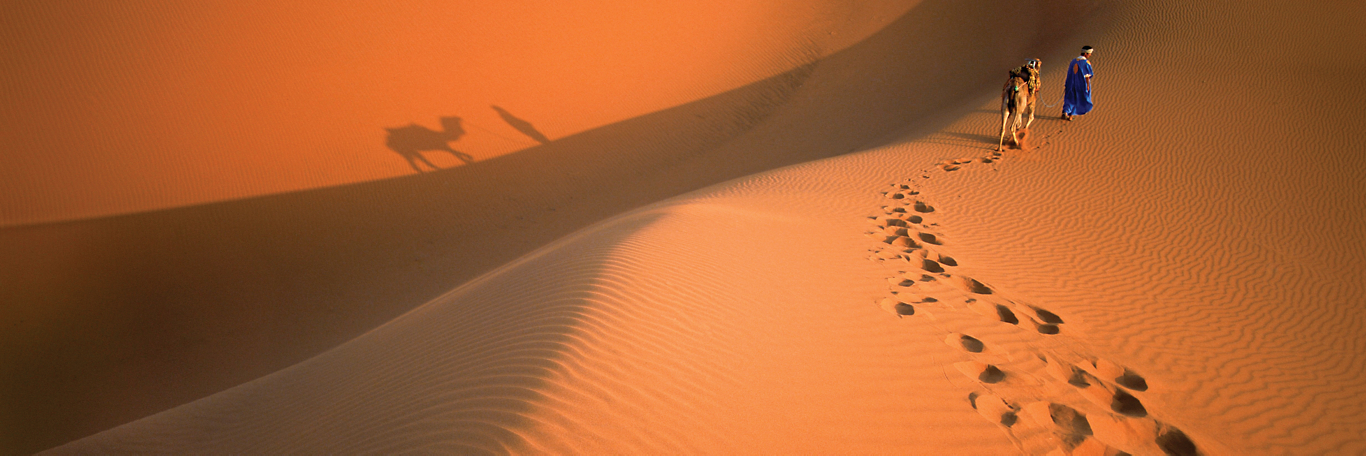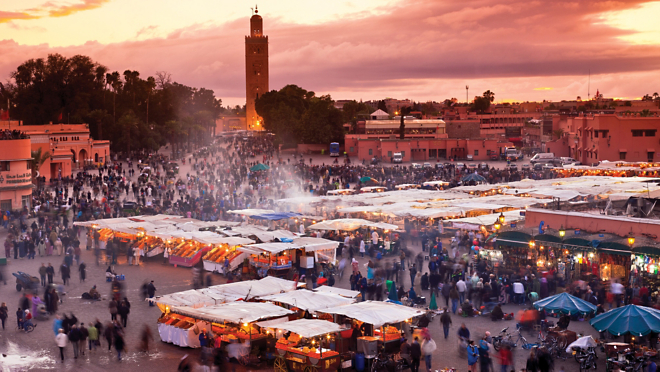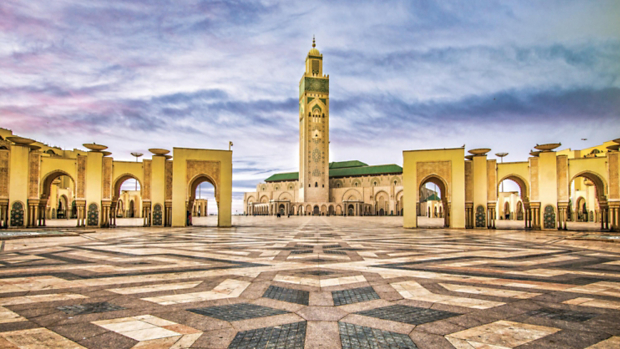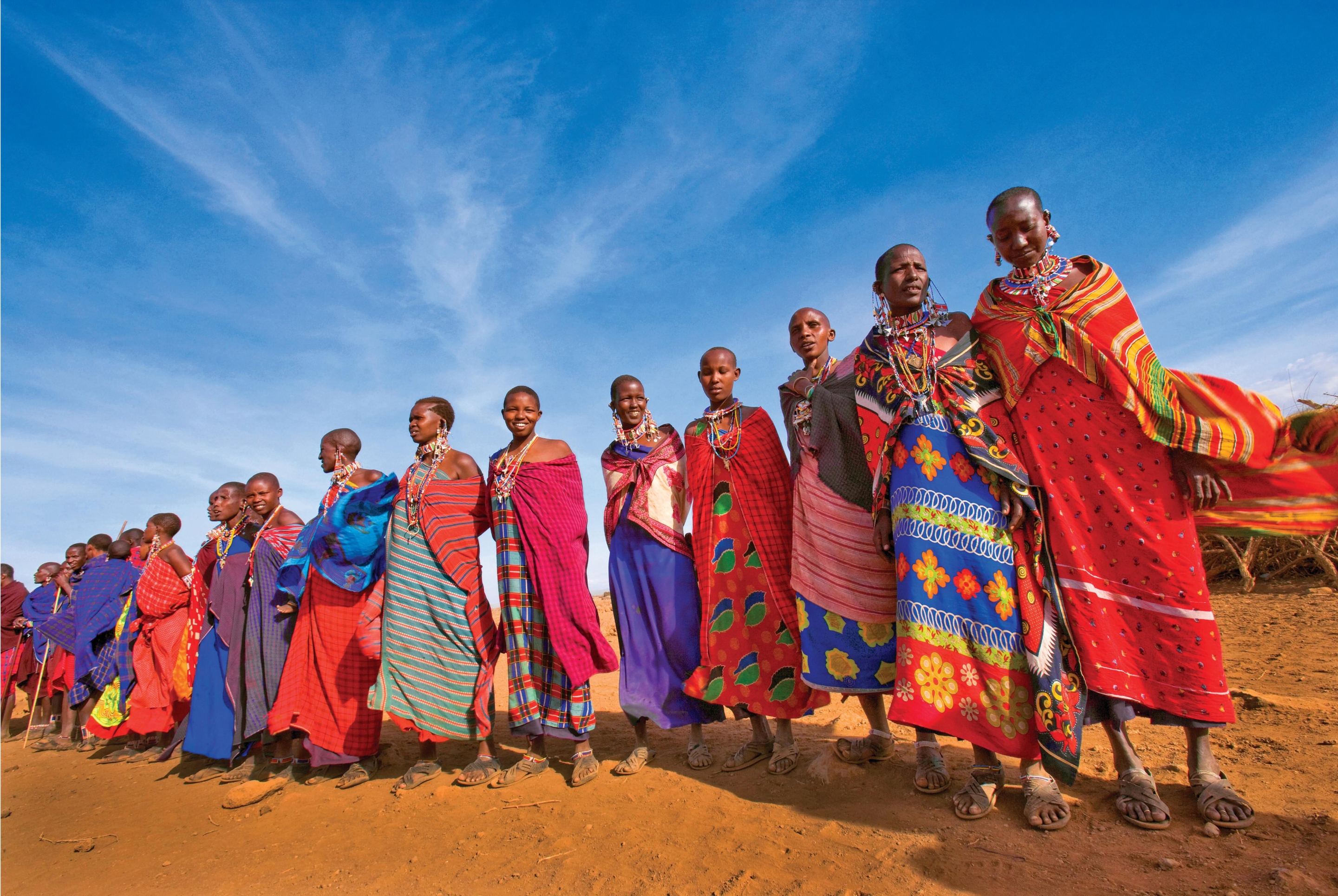You’re receiving this message because your web browser
is no longer supported
We recommend upgrading your browser—simply click the button below and follow the instructions that will appear. Updating will allow you to accept Terms and Conditions, make online payments, read our itineraries, and view Dates and Prices.
To get the best experience on our website, please consider using:
- Chrome
- Microsoft Edge
- Firefox
- Safari (for Mac or iPad Devices)

morocco
Overseas Adventure Travel, the leader in personalized small group adventures, has been helping change lives through travel since 1978. Our 5 Morocco adventures—1 Small Group Adventure and 4 Small Ship Adventures—will take your small group into the heart of a destination to venture where the big tour groups can’t. No matter which adventure you choose, O.A.T. always offers:
- Personalized travel experiences, with options to arrive early, add pre- or post-trip extensions, stopover in popular cities, and more.
- Small group of no more than 25 travelers, allowing us to take you off the beaten path and immerse you in local culture.
- Adventures tailored to the solo traveler, with free or low-cost Single Supplements and 23,000 single spaces being offered in 2024.
- Expert Trip Experience Leaders, residents of the region you visit who will share their insights and bring your destination to life.
When you set out to explore Morocco with O.A.T., there are endless travel experiences waiting for you. Riding a camel across the Sahara’s ocher dunes and watching the stars appear across its expansive, inky sky. Exploring the atmospheric medinas and souks (markets), where the air is perfumed with spices and stalls overflow with everything from carpets and handbags to honey-soaked sweets. Discover all of this and much more when you journey to Morocco with O.A.T.
Your FREE Personalized Morocco Travel Planning Guide
Your FREE Personalized Morocco Travel Planning Guide is on its way
Want to continue learning about Morocco? Return to our Morocco destination page.
Go Back To MoroccoPlease note: To complete your registration, check your email—we sent you a link to create a password for your account. This link will expire in 24 hours.
Compare Our Adventures
Click 'Select to Compare' to see a side-by-side comparison of up to adventures below—including
activity level, pricing, traveler excellence rating, trip highlights, and more

Spend 15 days in Morocco on
Morocco Sahara Odyssey
O.A.T. Adventure by Land

Spend 2 days in Morocco on
New! Mediterranean Navigation: Malta, Sicily, Tunisia, Algeria, Morocco & Coastal Spain
O.A.T. Adventure by Small Ship

Spend 6 days in Morocco on
New! Coastlines of Portugal, Spain & Morocco
O.A.T. Adventure by Small Ship

Spend 2 days in Morocco on
New! Cruise Madeira to the Canary Islands & West Africa
O.A.T. Adventure by Small Ship

Spend 1 day in Morocco on
Iberian Voyage: Lisbon to Barcelona
O.A.T. Adventure by Small Ship
Spend 5 days in Morocco on our
Post-trip Extension
Timeless Morocco: From the Souks of Marrakesh to Seaside Casablanca
Timeless Morocco: From the Souks of Marrakesh to Seaside Casablanca

Compare Adventures
Add Adventure
including international airfare
per day
*You must reserve the main trip to participate on this extension.
**This information is not currently available for this trip. Please check back soon.
You may compare up to Adventures at a time.
Would you like to compare your current selected trips?
Yes, View Adventure ComparisonMorocco: Month-By-Month
There are pros and cons to visiting a destination during any time of the year. Find out what you can expect during your ideal travel time, from weather and climate, to holidays, festivals, and more.
Morocco in December-February
When winter comes to Morocco, it brings dramatically different weather to each unique region of Morocco. In the inland cities like Fez and Marrakesh, days can be warm, with temperatures in the range of 50-60 degrees Fahrenheit, while nights are cool. Along the coasts, winter is mild, but cloudy and rainy. The onset of winter brings fewer visitors to Morocco's sometimes-crowded cities and attractions, and the mild daytime temperatures make exploring comfortable.
Things are slightly different in the Sahara Desert, where days are mild but nights are downright cold, and the High Atlas mountains, where it is truly wintry. There, temperatures drop below freezing, with snow and even skiing—the season for winter sports is brief, however, lasting only a month between the middle of January and the middle of February. Winter sports enthusiasts should be warned that blizzards in the High Atlas can come on suddenly, and ski slopes are rarely groomed.
In February, almond blossoms herald the forthcoming spring season.
Must See
In Morocco's temperate zones, almond trees are a major crop—and in February, they soften a sometimes-harsh landscape with clouds of pink-and-white blossoms. February visitors have the chance to see a more pastoral Morocco, a unique perspective of a country more closely associated with wind-carved desert sands.
Morocco in March-May
Spring is an ideal time to visit many of Morocco's diverse landscapes. In the Sahara, daytime temperatures are warm without the overwhelming heat of the summer. Lucky travelers may witness a far-off sandstorm kicked up by the legendary Sirocco wind (when this wind reaches Europe to the north, it is still carrying Moroccan sand, which it then releases in a red-tinged "blood rain"). In the High Atlas mountains, spring is a perfect time for hiking, with warm days and dramatic waterfalls fueled by melting snow.
Elsewhere in Morocco, the countryside is surprisingly bucolic, as wildflowers and sprouting greenery paint the landscape a rainbow of springtime hues. In cities like Marrakesh and Fez, the narrow and sometimes-crowded medinas have not yet reached summertime capacity, and mild days make exploring enjoyable.
Holidays & Events
- March-April: Ramadan falls during the ninth month of the Islamic calendar, which in 2023 straddles the Gregorian calendar's March and April. Muslims fast during the daylight hours, so many restaurants operate during limited hours or close altogether. However, the chance to see families breaking their fast and celebrating together after dark more than makes up for any inconvenience.
- Early May: Locals in the Dades Valley, a sea of pink Persian roses, celebrate the rose harvest with a festive—and floral—festival that involves music, dancing, a pop-up souk or market, and the crowning of a Rose Queen.
Must See
With an ideal climate for visiting the desert, spring is the time to watch the sun rise and set over the red-gold dunes of the Sahara.
Morocco in June-August
When summer heat descends on Morocco, some areas remain livable while others are downright hostile. The Sahara desert becomes unbearably hot for everyone except the resident snakes and insects. Marrakesh and Fez are hot too, with highs climbing toward 95 or 100 degrees Fahrenheit. It helps that humidity is low throughout the country, and Moroccan buildings themselves mitigate heat, with thick walls and fountain-studded inner courtyards. Cooler nights, when temperatures drop into the 60s, offer a respite from the sometimes-stifling heat.
Despite the heat, summer is the most popular season for Moroccans themselves to travel, since school is out. Locals and visitors alike head for the two coasts—the Mediterranean in the north, and the Atlantic to the west. Beach towns like Essaouira, Assilah, and Agadir benefit from a cool breeze off the water, and shorelines are crowded all summer long. The High Atlas mountains also remain comfortable, with their high altitude keeping the temperatures moderate.
Holidays & Events
- June: The Gnaoua World Music Festival enlivens waterfront Essaouira with a mix of traditional sub-Saharan folk music, plus a dash of jazz, pop, and rock for good measure. Two main stages host free concerts, while tickets can be purchased for more intimate shows throughout the small beach town.
- June: The World Sacred Music Festival brings outdoor concerts of all types of world music to the Fez medina for a week every June.
- June or July: For a month every summer (the timing depends on the year), frenetic Marrakesh steps up the energy even further with the Marrakesh Popular Arts Festival. Fire dancers, snake charmers, storytellers, singers, and entertainers of every stripe descend on the medina for the city's oldest festival, founded by King Mohamed V in 1959 to preserve Morocco's traditional heritage.
Must See
Despite the heat, summer is a rewarding time to visit Morocco—two world-class festivals put Morocco's rich cultural heritage on display, giving visitors a whirlwind introduction to the country's outstanding traditional arts.
Morocco in September-November
In a land of extremes, fall is the one time of year when Morocco's diverse regions reach a happy medium. From the Sahara desert to the High Atlas Mountains, and from the inland cities of Marrakesh and Fez to the Atlantic and Mediterranean coasts, the weather is warm and comfortable—although savvy travelers pack an umbrella in November, Morocco's rainiest month. Overall, fall is an excellent season for mountain hikes and desert trekking.
In the cities, summer crowds have dissipated, making this an easy-going time to explore. South of Ouarzazate, in the oases of the Draa Valley, fall is the season for date-harvesting and celebratory harvest festivals.
Holidays & Events
- September: Tanjaz Festival. Held annually for three to five days in September, this international jazz festival takes place in multiple locations in Tangier featuring renowned artists as well as emerging musicians. Workshops are also available throughout the city for those interested in music and dance.
- Early October: Erfoud Date Festival. The exact dates (no pun intended) depend on Mother Nature, but for three days every fall, Erfoud celebrates its abundant date harvest with prayers, parades, camel races, and feasting.
Must See
In September, nomadic Berber communities move down from high elevations, where they spend the summer, to the lower slopes of the High Atlas and Rif mountain ranges. Goats, sheep, tents, and entire multi-generational families are along for the trip, but this way of life is quickly vanishing as younger Berbers begin to live more stationary lives in Morocco's cities.
Average Monthly Temperatures
High Temp Low Temp
Morocco Interactive Map
Click on map markers below to view information about top Morocco experiences
Click here to zoom in and out of this map
*Destinations shown on this map are approximations of exact locations
Sahara Desert

The Sahara Desert covers an area roughly the size of the United States, but towering sand dunes are found only in certain parts of it—including the western edge of Morocco. Here, the climate is as dramatic as the scenery, from winter nights that fall below freezing to summer days that rise well above 100 degrees. But the stark beauty of the wind-carved orange dunes and star-studded night skies more than make up for the extreme climate. In fact, some tribes of Morocco’s nomadic Berber population, including the Tuareg or “blue men,” live here year-round. Visitors can try out the Saharan Berber lifestyle at far-flung tented camps among the dunes, where the only way to arrive is by camel. Here, the day revolves around spectacular sunrises and sunsets, cultural interaction with the nomads, and campfires under a blanket of stars.
Explore the Sahara with O.A.T. on:
Marrakesh
The thick pink walls of Marrakesh hide a dazzlingly colorful array of people, souks, palaces, and houses of worship from mosques to synagogues. It all revolves around Djemma el-Fna, a massive square where snake charmers, drum circles, juice carts, and food stalls gather in a daily festival of sights, sounds, and flavors that can’t be found anywhere else in the world. On the fringes of the square, narrow alleyways lead to opulent riads, guesthouses built around a central courtyard, and busy laneways give way to the city’s souks, a separate market for each handcrafted good.
The sense of treasure laying hidden within this maze is captured in the story of the Saadian tombs: Saadian Sultan Ahmed al-Mansour built his mausoleum before death, lining it with Italian Carrara marble, and pure gold. The tombs, right in the central medina, were walled up several decades after his death in 1603 and completely forgotten—until aerial photography revealed their location more than three hundred years later. Who knows what more will be discovered in Marrakesh? It’s a city of constant surprises.
Explore Marrakesh with O.A.T. on:
Fez
Merely stepping through the gates of Fez comprises a journey of a thousand years: the medina and the lifestyle contained within have changed so little since the city’s founding in 789. One of the Arab world’s largest and best-preserved old cities, Fez is home to the world’s oldest university and has always been a center of learning and intellectual pursuit.
Today, the medina is home to 70,000 people and is the largest car-free urban zone in the world. Nearly anything can be bought in the maze of alleyways—especially leather goods. The tanneries of Fez are famous the world over, and overwhelm the senses with the kaleidoscopic dyes, the sound of hundreds of men beating the leathers to soften them, and the smell of lye (guides recommend carrying a sprig of mint). Despite the whirlwind of activity in the medina, there are still pockets of serenity sprinkled throughout, including the many tiled mosaic fountains and quiet medersas, or seminaries.
Explore Fez with O.A.T. on:
Casablanca

Casablanca was founded nearly three thousand years ago by the Berbers; today it is Morocco’s largest and most modern city, in addition to being its most important Atlantic port and the financial center of the country. Despite its size, it is home to one of Morocco’s smaller medinas and actually shows greater influences from the many colonists who have passed through: from the Phoenicians and Romans in ancient times, to the more recent Portuguese, Spanish, and French. The classic 1942 film starring Humphrey Bogart and Ingrid Bergman, while focused mainly on Nazi resistance, also captured the tension of a colonist-occupied city with its own growing resistance.
Casablanca contains Morocco’s largest house of worship, the stunning Hassan II Mosque. Gilded ceilings, hand-carved columns, colorful mosaics, and a retractable roof that lets the sunlight stream in over worshippers bring the mosque to life and make it a worthwhile stop for visitors.
Explore Casablanca with O.A.T. on:
Aït Benhaddou

A dun-colored fortress that rises from the edge of the Sahara like a mirage, Aït Benhaddou is one of the best-preserved ksars, or fortified villages, in the Atlas Mountains. The village, a UNESCO World Heritage Site, is built entirely of mud and still resembles its younger days as an 11th-century caravanserai on the ancient trade route between Sudan and Morocco. The excellent restoration work is thanks mainly to Aït Benhaddou’s Hollywood ties: it has been a stand-in for other ancient cities in Lawrence of Arabia, Jesus of Nazareth, Jewel of the Nile, and Gladiator.
Aït Benhaddou is home to the Imik Smik Women’s Association, a group that teaches women and girls how to sew, read, cook, and develop healthcare routines in their home lives. Visitors here also have the opportunity to witness Berber tribespeople cutting grass and working the land—as desolate as this desert setting may seem, it still supports local life.
Explore Aït Benhaddou with O.A.T. on:
Tangier

Europe’s gateway to Africa, Tangier has guarded the Strait of Gibraltar for centuries. The labyrinth of ancient lanes in the Old Medina twist and turn throughout the city, contained by the walls of a 15th century fortress. This Moroccan enclave has influences from France, Spain, Portugal, and north Africa, mixing to form a thriving cosmopolitan culture that has captivated artists and philosophers the world over.
Tangier’s white-walled lighthouse greets visitors, just as it has for over 150 years. Cape Spartal rises 1,000 feet above where the Mediterranean and the Atlantic meet. These panoramic views are in stark contrast to the city center. In the middle of Tangier, the bustling Grand Socco central square offers a cacophony of sight and sound. Here, the souk (market) is a multi-sensory experience with intoxicating aromas of exotic spices wafting through the air, while vibrant fruit stalls and shops selling artisanal goods abound at every turn.
Explore Tangier with O.A.T on:
Traveler Photos & Videos
View photos and videos submitted by fellow travelers from our Morocco adventures. Share your own travel photos »


